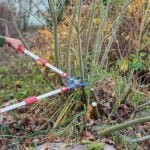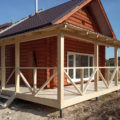About 10-12 thousand years ago, in the Neolithic era, our ancestors decided to switch from collecting edible root fruits and hunting to agriculture and animal husbandry. Historians value this fact very highly and call it the First Agrarian Revolution. It was the emergence of agriculture that laid the foundation of our modern civilization. And it is the regular agrarian revolutions that periodically occur that drive progress — no matter how much the inventors and manufacturers of the wheel and other mechanisms would like to appropriate all the laurels for themselves. Now I propose to dig into the past: consider the oldest system of agriculture — slash-and-burn.
Fire farming system
Ancient farmers had a very meager set of tools: a digging stick, a stone axe and a stone hoe. Clearing a plot of forest and cultivating the land with such equipment is not an easy task. It is clear why they needed a different, less labor-intensive solution.
We have known about the oldest system of agriculture — slash-and—burn, or simply fire – since school days. But only a few paragraphs are devoted to this topic in the textbook.
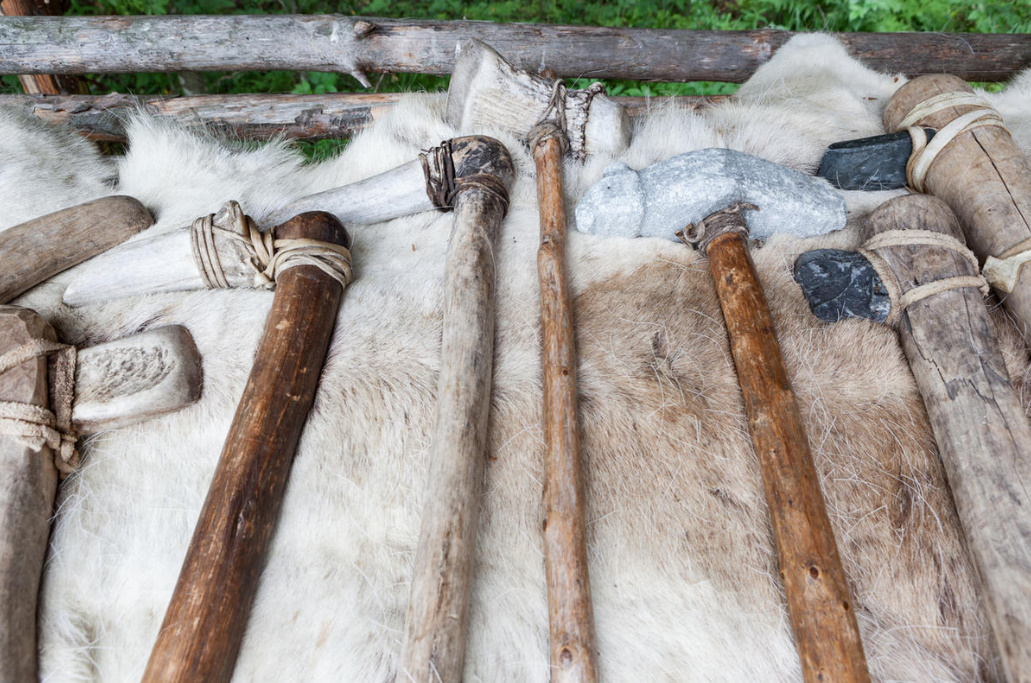
Technology of fire farming: burn-sow
A simplified description of the technology is as follows. The farmer selected a plot in the forest that meets the requirements, which included the breed and age of trees and other vegetation, location relative to the cardinal directions, terrain, and sun illumination. Further, the bark of the trees was cut from below, and in this form the site was left for a while. For 5-10 years, the trees dried up and were felled by the wind. Sometimes it was possible to find a suitable place with a natural windfall. After drying of the combustible material and its uniform distribution over the site, wood, grass and shrubs were burned.
With the advent of iron tools, the farmer could no longer wait for the wind. Felled trees dried up faster than those left on the root — in 2-3 years.
In this method of management, as in any other, there were many subtleties affecting the frequency of changing plots, their fertility and, as a result, the yield. In general, after burning the forest, the area with the forest reduced by fire for agriculture was used for crops from 1 to 3 years on sandy soils and up to 8 years on loam. In tropical forests, the plot after burning was suitable for crops from 4 to 6 years.
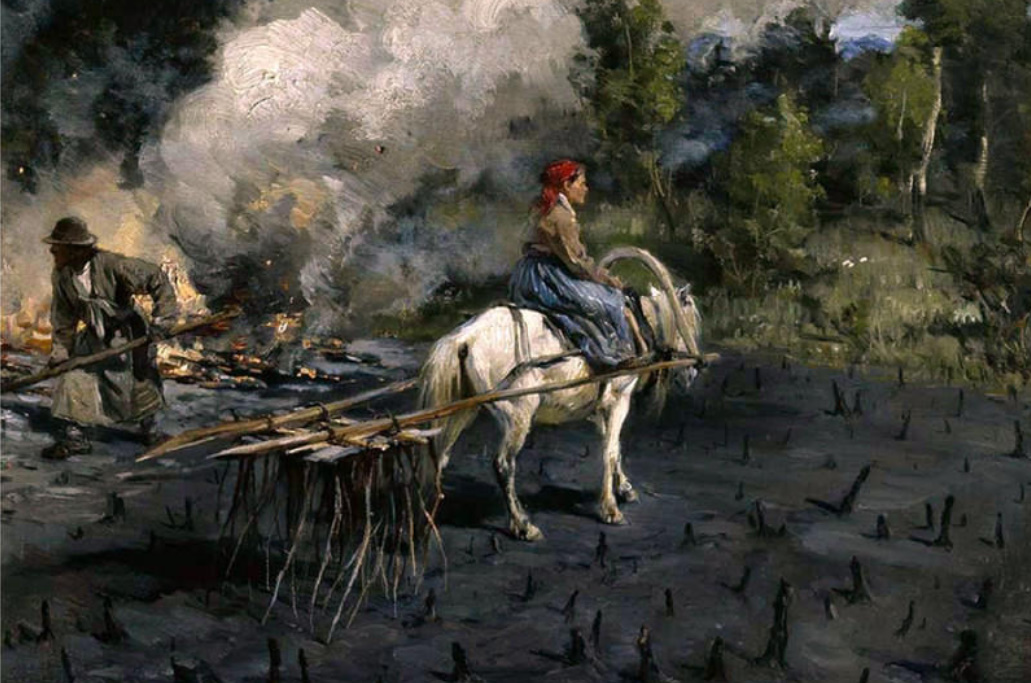
During the use of the site with the forest reduced by fire for agriculture, crops alternated: from flax and grain in the first years to vegetables and peas in the following. By the way, turnips grow only with an excessively large amount of ash. Then for another 10 years the plot was used, if necessary, for grazing animals and haymaking. Then such a site was launched and after 25-40 years it could be reused for the organization of a sub-section.
Although fire-slash farming is considered primitive, however, it was widespread in almost all wooded areas. Similar systems were practiced in Malaysia (Ladang), Africa (Chitamen), South and Central America (milpa). In some even not so uncivilized places — in European countries (for example, in Sweden, Finland, Norway), this method was used right up to the middle of the XX century. In Finland, in 1830, up to a quarter of the total rye harvest was harvested in the subsections. And in developing countries — Africa, South America, Asia — they are still farming in this way.
High yield at low cost
The popularity of this primitive method, which has been used practically in its original form for such a long time, especially against the background of modern agriculture, seems unnatural. However, there is an explanation for this.
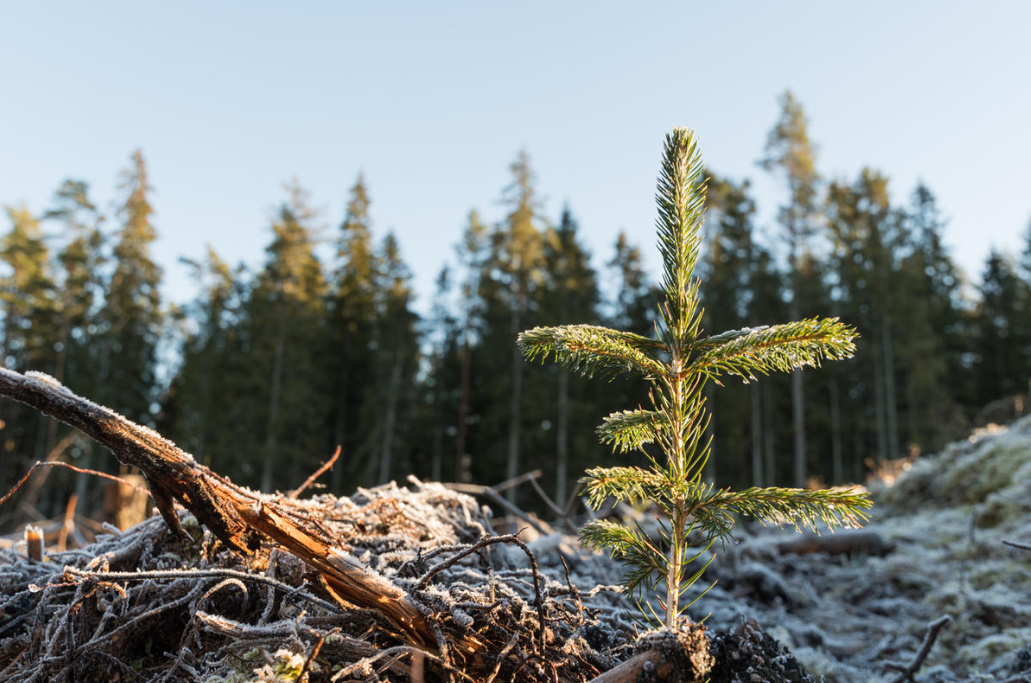
In a school textbook, the technology of fire farming is described as a primitive, very heavy method in which burning the forest is only a necessary measure to clear the area for ploughing. We used to think that this is an archaic method, which, as soon as a technical opportunity presented itself, was replaced by a more advanced one — arable farming. However, according to the research of some historians, this is not the case. Slash-and—burn agriculture is a self-sufficient, highly efficient technology. Forestry, unlike arable farming, has very important features.
- High yield
Sowing on fresh burning is more productive than arable farming. Especially in the northern areas belonging to the zone of risky farming. So, according to researchers, a peasant from a slash field received a grain harvest of x30 (that is, he collected 30 times more than he sowed), or even x. Some sources even mention the x100. In the arable field, x6 was considered a good harvest, and x4 was considered an ordinary one.
- No need for complicated tools and working cattle
There was no need to use a heavy plow in the forest field and, accordingly, heavy draft cattle, which still needed to be used and fed — grazing in the summer, mowing hay and growing grain for the winter. After the fall, the peasant did not plow the land — he only loosened it with a harrow-bow or just a harrow-twig (the top of a spruce with knots). That is, agricultural implements could be made right on the spot — and as they wear out, they could not be repaired, but replaced with new ones. Or — to work with a hand tool at all, if there was no horse on the farm.
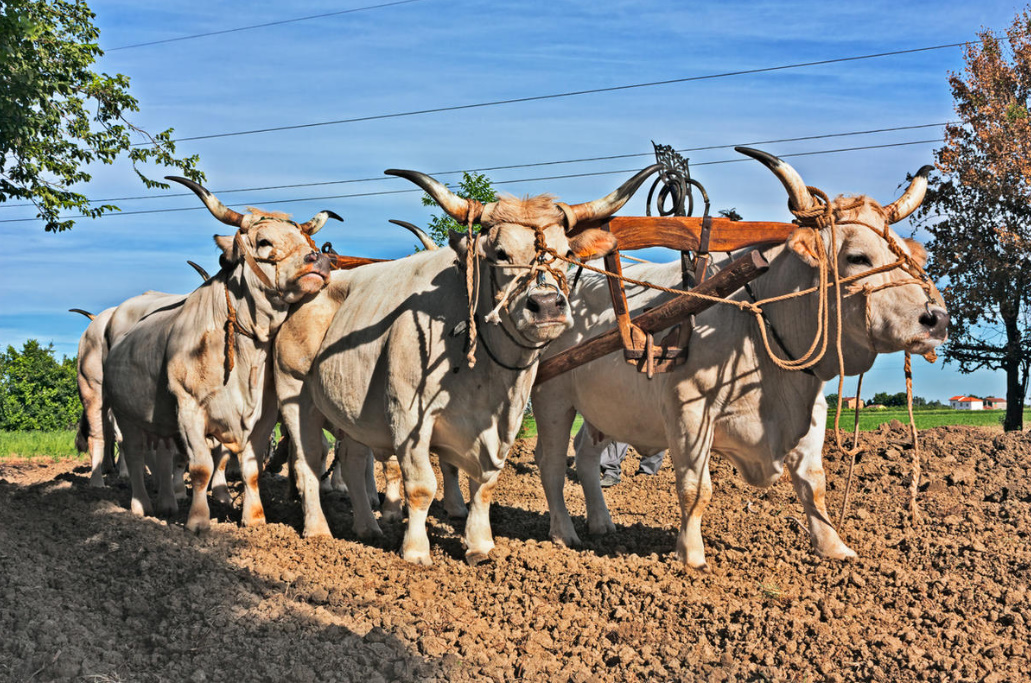
- Less processed area
Due to the high yield, a much smaller area was required to process with the cutting technology. For a family of 5 people, 1-2 hectares were enough in excess against at least 6 hectares of arable land.
- Minimum of agrotechnical operations
Also, fertilizers were not applied, that is, minus one hard work — to take out a large amount of manure to the field and distribute it evenly. A peasant on a plot with a forest reduced by fire for farming sowed grain almost immediately after the fire went out — right into a thick layer of ash, sometimes still warm. And passed the harrow, closing the seeds. Fire treatment not only gave the crops nutrients with ash, but also made some elements in the soil, previously inaccessible to plants, easily digestible.
- Absence of weeds
In the first year or three, there were practically no weeds on the field: the seeds of annuals burned together with the rhizomes of perennials. During the burnout, one of the concerns of the farmer was to make sure that the earth was burned to a sufficient depth — at least 3-4 fingers. If there was not enough fuel from felled trees, dead wood was added. Therefore, it was possible to grow wheat on forest plots without much effort, for example, a crop that is very sensitive to field clogging.
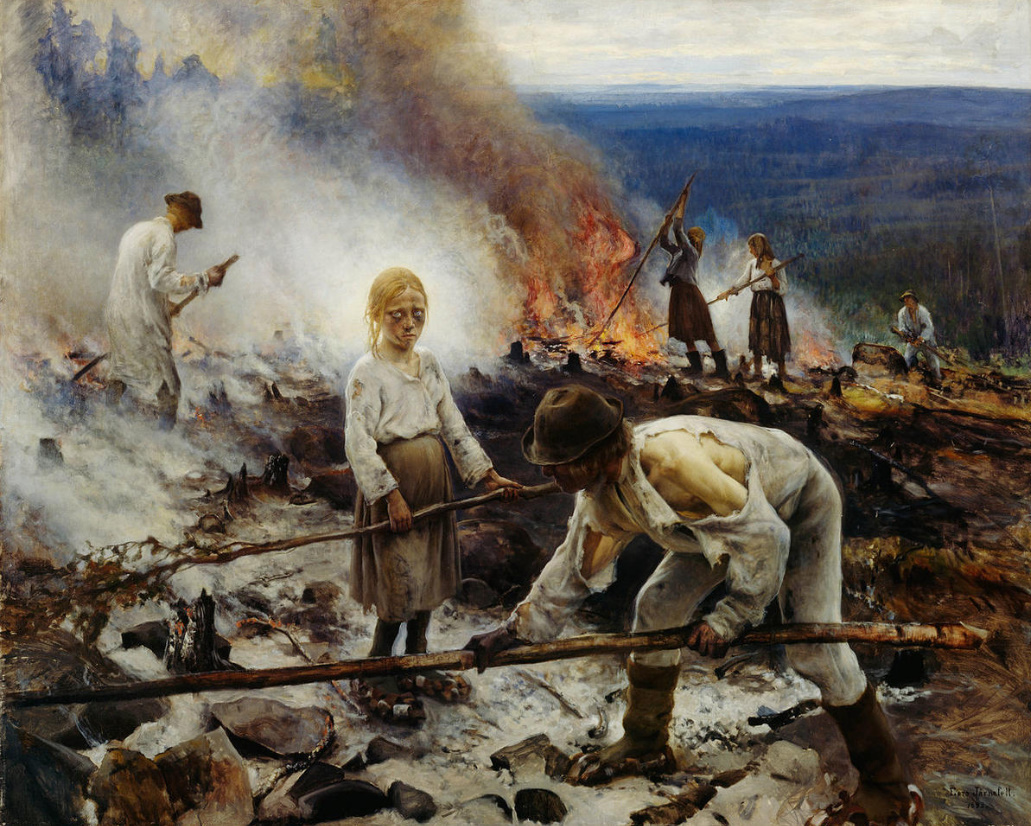
- More free time
Forest farming, unlike arable farming, left a lot of free time for a person: he was not tied to a field on which some work had to be done regularly from early spring to autumn. Farming in forest areas was part of a complex economy that included traditional hunting, fishing and gathering, as well as bee-keeping. Each family had several plots scattered in the forest (sometimes at a considerable distance) in different stages of processing. The peasant had the opportunity to carry out some operations (search for a suitable plot, cutting) in the winter or simultaneously with other household chores — hunting, picking mushrooms and berries, harvesting firewood.
- Lack of hunger
According to researchers, hard work and intermittent famine are the lot of peasants engaged in arable farming. Forest farming is more protected from crop failures: a peasant had several forest plots on a cutting, often geographically quite remote from each other. Unlike the one who had one field, the forest peasant “did not put all his eggs in one basket.” And free time and energy allowed us to eat more varied and high-quality food, complementing the fruits of agricultural labor with game, fish and wild plants.
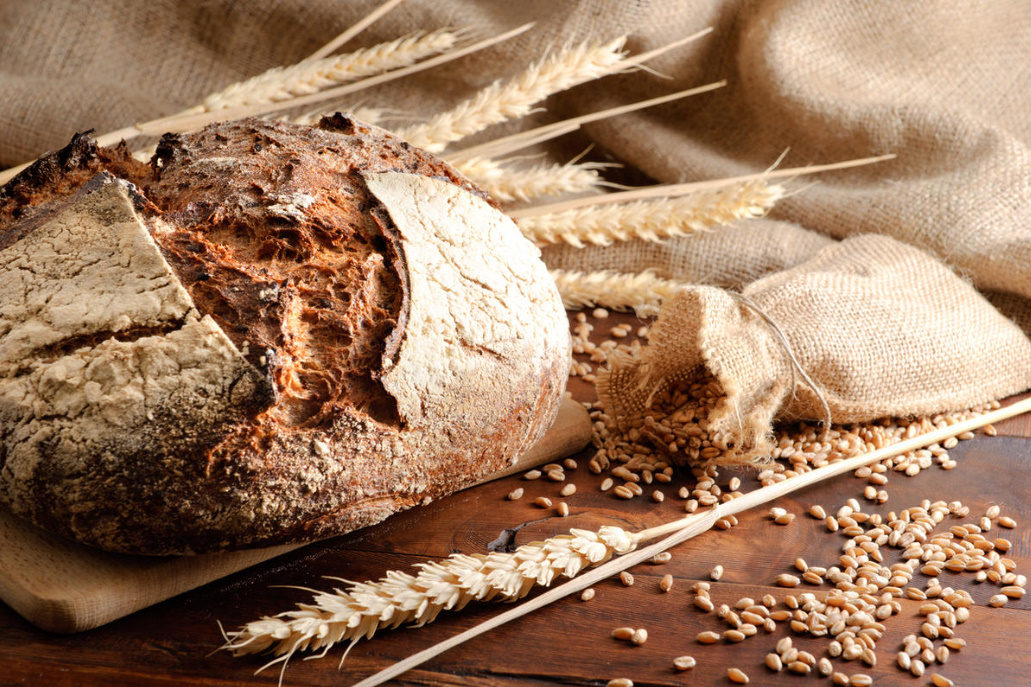
A small digression
Many of us studied history only at school and at a fairly young age. Therefore, there is often a one-sided and stereotypical impression. In addition to the idea that slash-and-burn agriculture was a primitive predecessor of arable farming, we often believe that the peasants were enslaved and tied to the land.
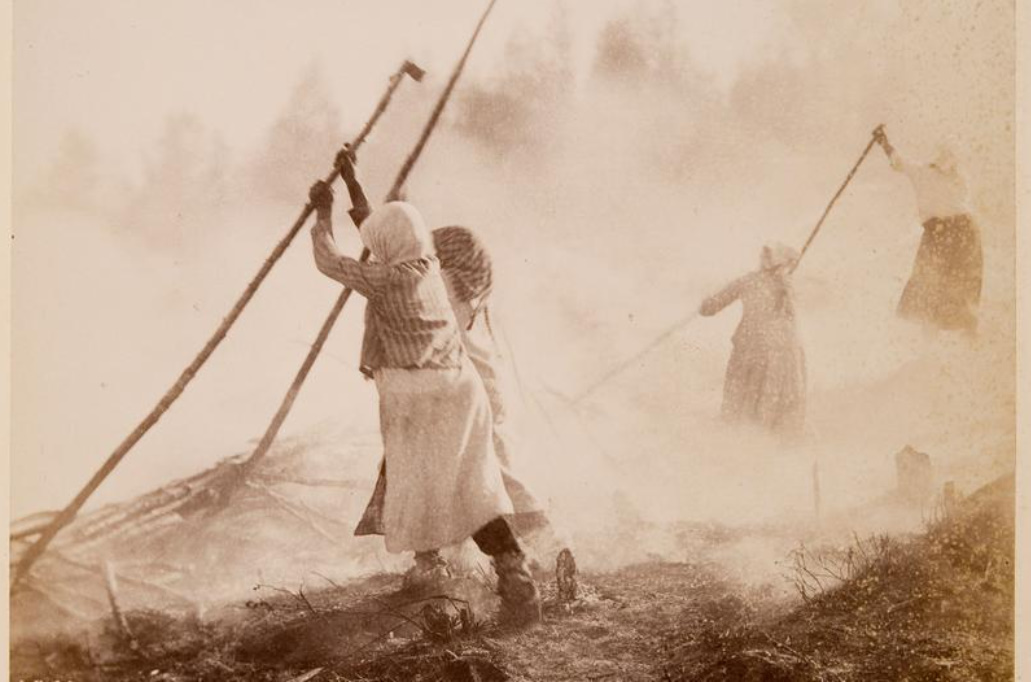
The system of forest farming, firstly, did not imply serfdom: the peasant did not have a permanent field, he did not “sit” on the landowner’s land and did not owe him. And secondly, it was simply impossible to take into account many of those who were engaged in slash-and-burn agriculture: the scattering of forest plots over a vast territory assumed mobility. The economy was conducted by the forces of one family — or several related relationships. A peasant family often had several houses located in the area of its activity, and changed its place of residence depending on economic needs. Or she lived in one permanent place only in winter, for spring-summer-autumn moving to temporary dwellings such as huts and dugouts, closer to her forest lands.
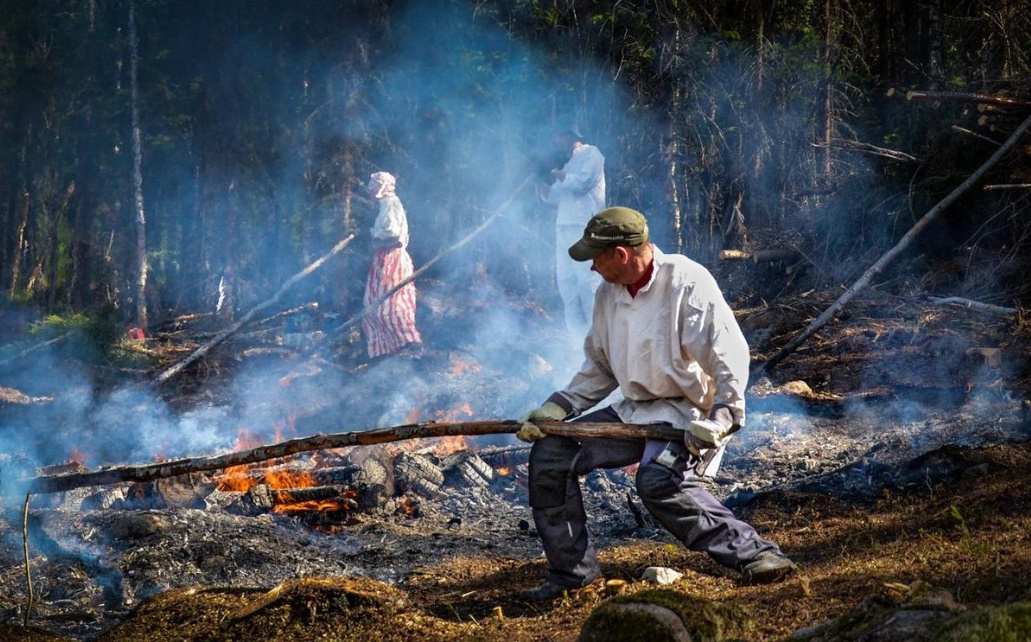
Such mobility of the peasant provoked not to hold on to his place in any adversity. By the way, if you want to feel like a forest farmer, go to the Koli National Park in Eastern Finland, where traditional slash-and-burn farming is carried out on the old Mattila and Ollila farms.














